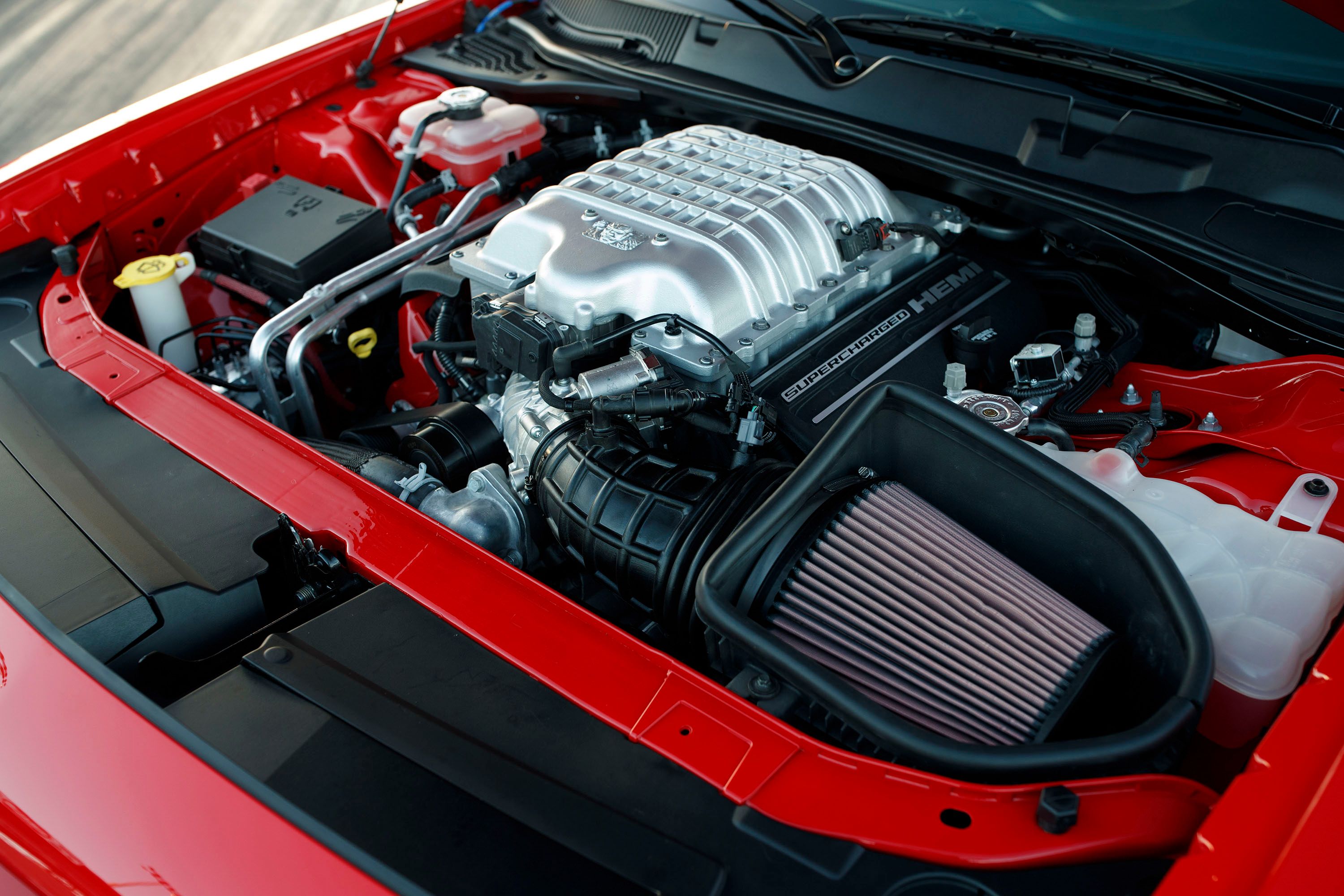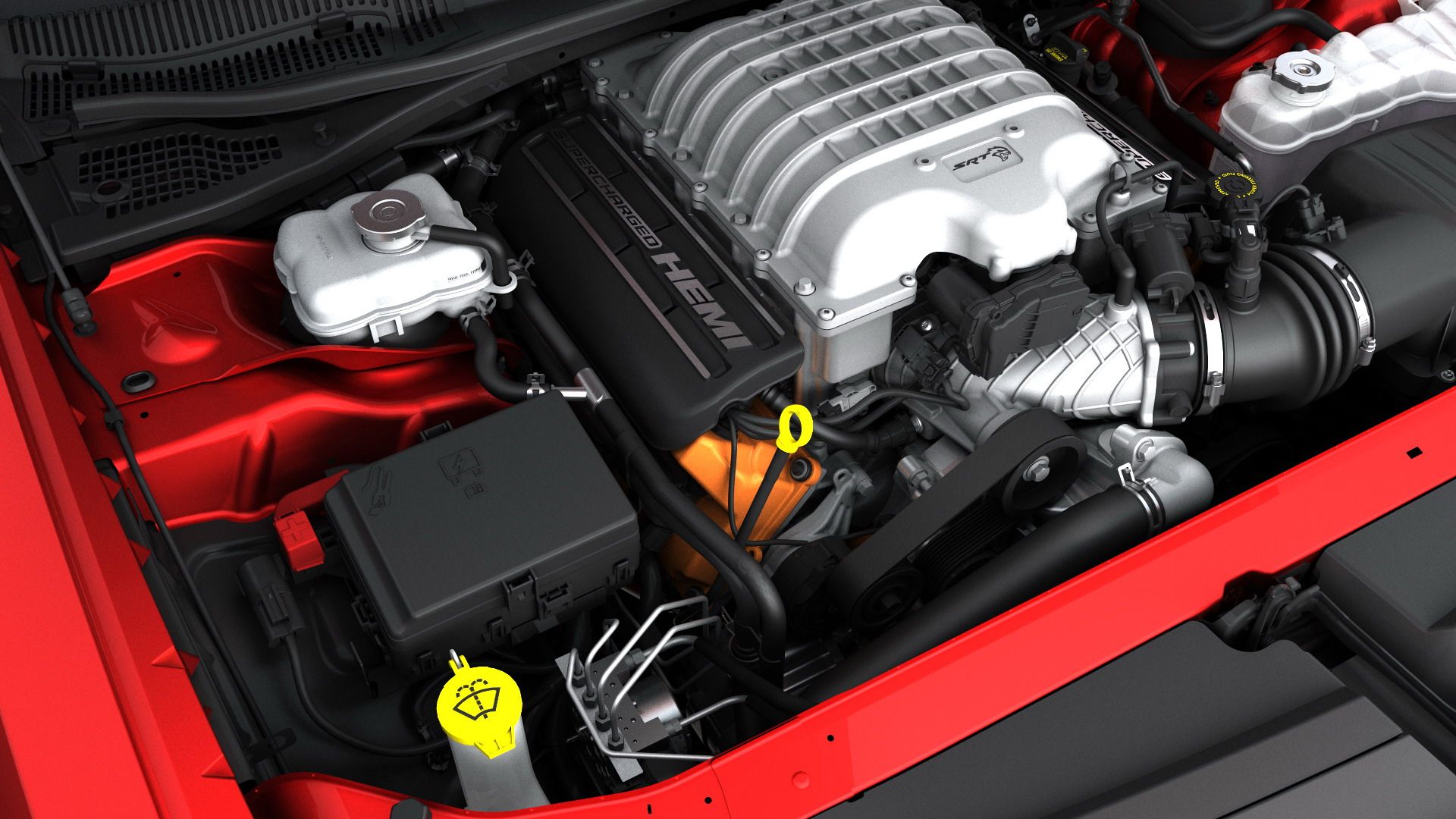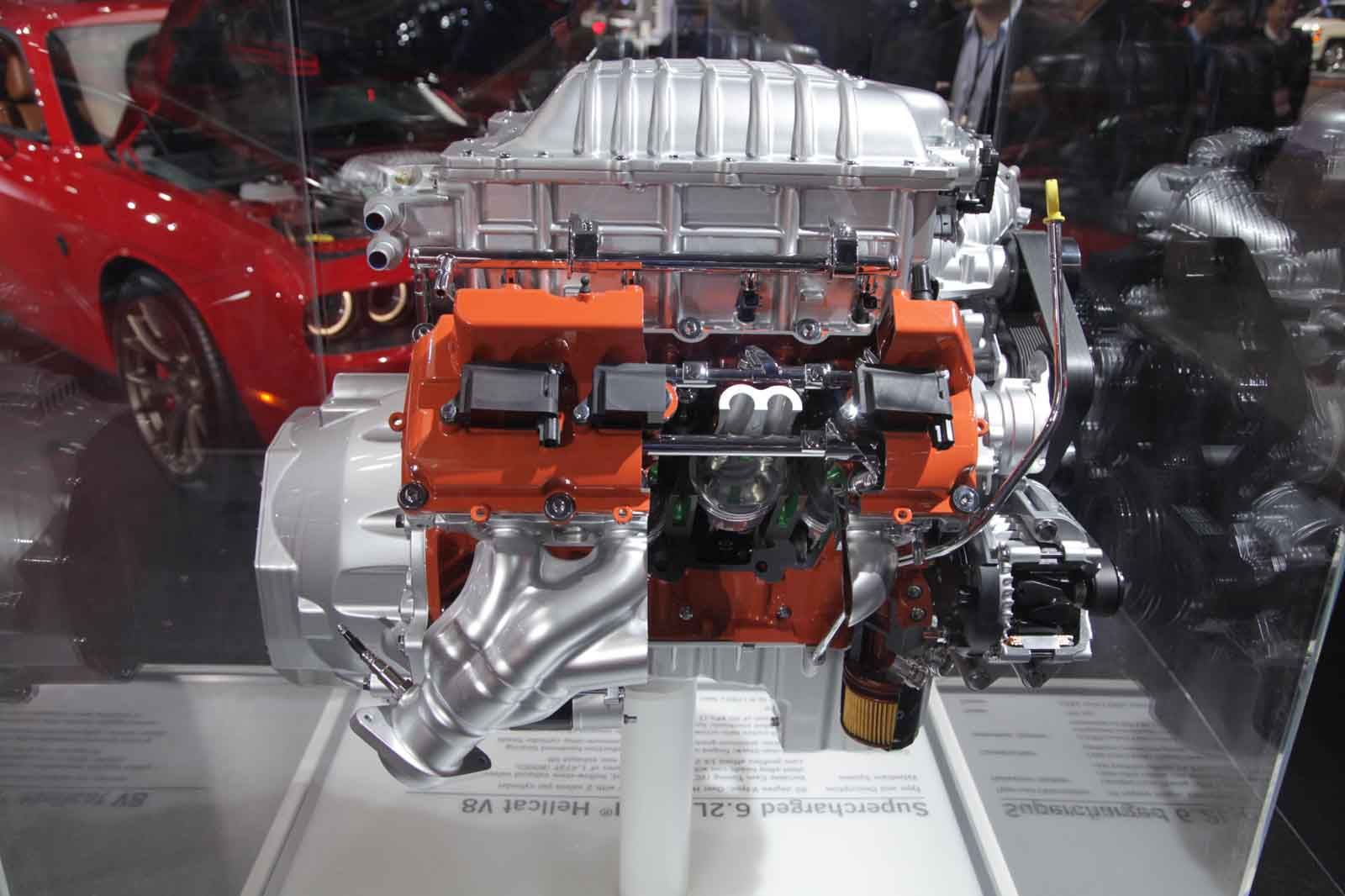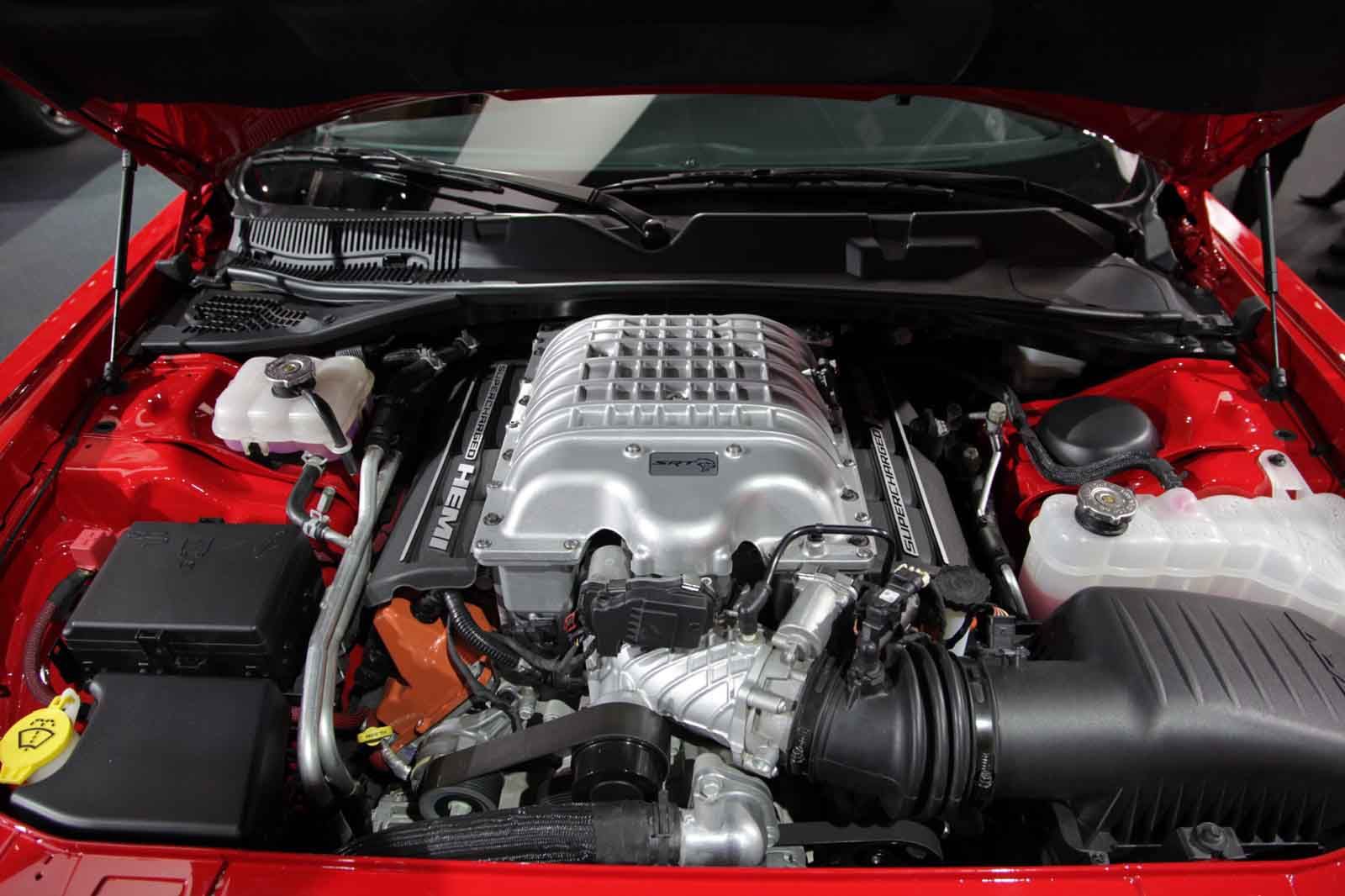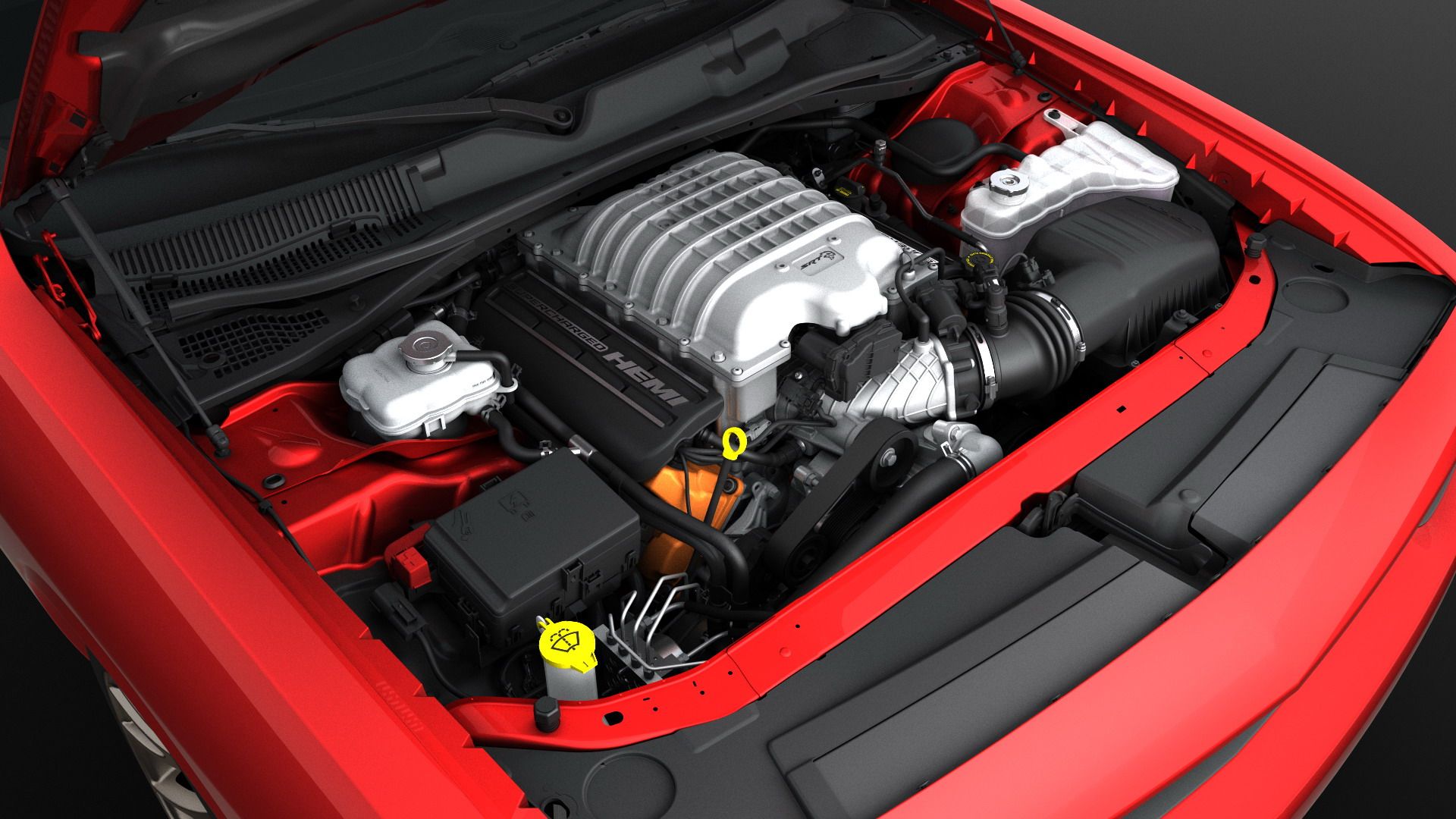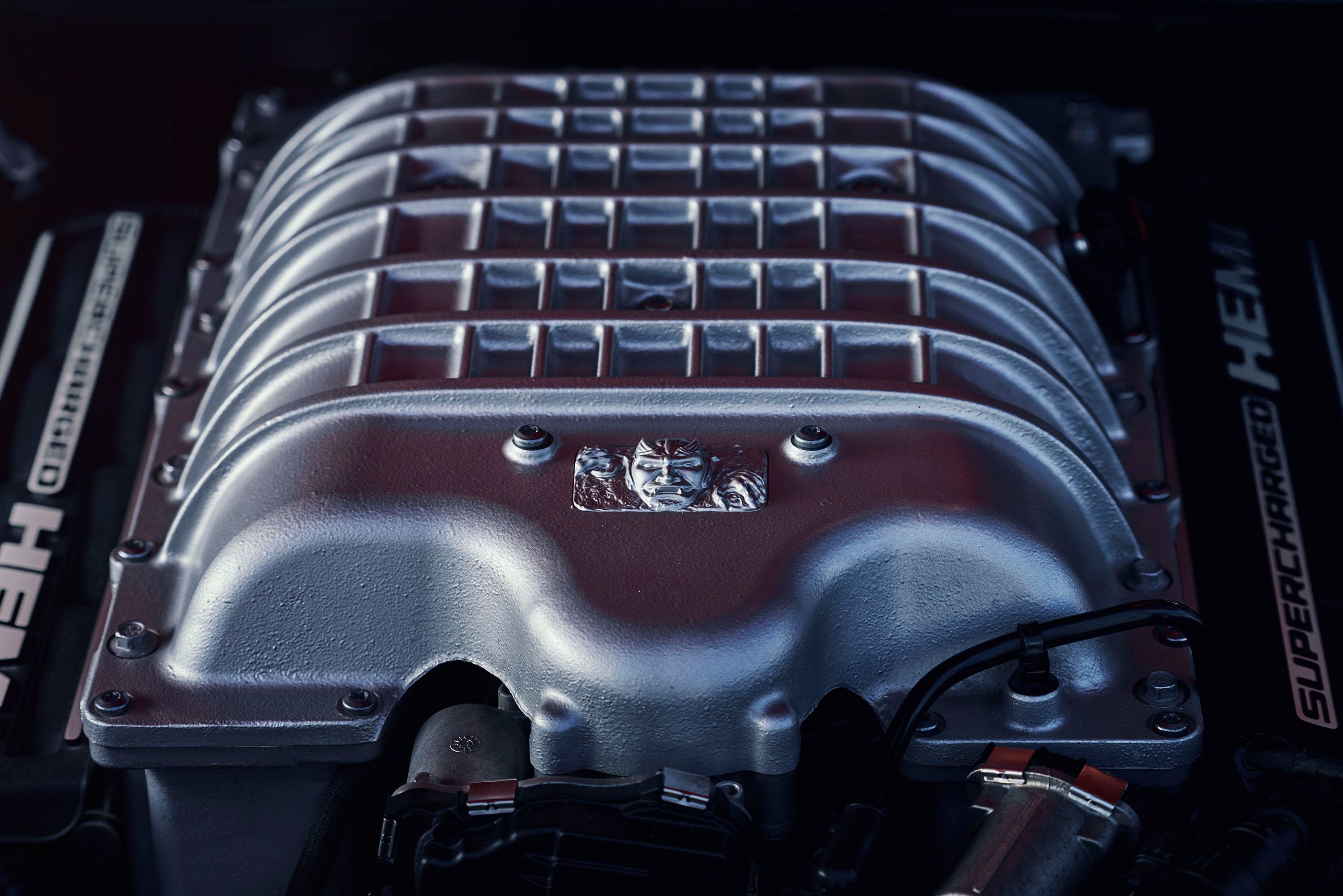The days of Dodge's supercharged, 6.2-liter V-8 engine are numbered, says company CEO Tim Kuniskis, who predicts that the infamous Hellcat models won't be around for long. But while V-8 power is slowly dying due to tightening fuel economy requirements, muscle cars won't disappear altogether. Kuniskis predicts that electrification will bring a new "golden age of muscle cars" upon us.
Prepare to bid farewell to the Hellcat V-8 engine
The powerplant that took the Dodge brand to spectacular heights in recent times is close to extinction due to tightening fuel economy and CO2 emission restrictions and the new wave of electrification, Kuniskis told CNBC. However, he believes that electrification won't be end of muscle cars.
"The days of an iron block supercharged 6.2-liter V-8 are numbered. They’re absolutely numbered because of all the compliance costs. But the performance that those vehicles generate is not numbered," he said, adding that electrification will spawn a new "golden age of muscle cars."
"The whole world is going to shift to electrification, right? We know this is coming,” he said. “The whole world’s going get there and when it does, the price point of that technology is going to come down and … the crazy people are going to take the electrification that has now become accessible from a price point and make that performance-based instead of economy-based."
Kuniskis went on to compare the 2020s to the early 1970s, when the oil crisis, increasing emission standards, and insurance costs killed off the first golden era of muscle cars.
"1972 was the beginning of the end of the Golden Age of muscle cars. They went away for fuel economy, for the oil crisis. They went away for safety. They went away for insurance, and they went away for increasing emission standards. It’s kind of crazy to think about we’re getting close to a similar list of things right now. So is this 1972 right now and we just don’t know it because we’re just drunk on the horsepower? I worry about that every single day because think about how long it took us to get here," Kuniskis said.
Muscle cars didn't return to their pre-1972 output figures until the 1990s, a long 20-year transition. Let's hope that it won't take as much until we have access to electric muscle cars that are as powerful as Dodge's current Hellcat models.
Dodge is still offering three Hellcat models
Dodge introduced its first Hellcat model, based on the Challenger, in 2014.It was powered by a supercharged, 6.2-liter V-8 engine rated at 707 horsepower and 650 pound-feet of torque. In 2017, Dodge launched the Demon, a drag-spec version of the SRT Hellcat good for up to 840 horsepower and 770 pound-feet of torque. The 2019 model year saw the introduction of an updated Hellcat, now rated at 717 horsepower and 656 pound-feet of twist, and the Hellcat Redeye, fitted with an upgraded V-8 good for 797 horses and 707 pound-feet of torque.
The second Hellcat model, based on the Charger sedan, arrived in 2014 with specifications similar to the Challenger Hellcat. The Charger Hellcat Redeye with 797 horsepower was launched for 2021 model year. Finally, Dodge also introduced a Hellcat version of the Durango SUV for 2021, powered by a 6.2-liter V-8 that cranks out 710 horses and 645 pound-feet of torque}.
FCA is also offering the Hellcat engine in the Jeep Grand Cherokee Trackhawk and the Ram 1500 TRX.
Dodge doesn't offer an EV, but that will change soon
Dodge is one of the very few automakers that do not offer a hybrid or an electric car as of 2021. The company's lineup includes only gasoline versions of the Charger, Challenger, and Durango, with the Journey and Grand Caravan discontinued for 2021. But this will change soon now that parent company FCA signed a merger with French automaker Groupe PSA in January 2021. The union is called Stellantis on corporate level and is headed by Carlos Tavares, who announced that every new vehicle the group launches until 2025 will offer an electrified variant. Dodge will remain a performance brand in this new EV era, so nameplates like the Challenger and Charger may continue with hybrid and all-electric drivetrains.
FAQ
Q: How Much Power Does The Nissan Maxima Have?
The Nissan Maxima is powered by a 3.5-liter V-6 that delivers a total of 300 horsepower at 6,400 rpm and 261 pound-feet of torque at 4,400 rpm. These numbers are pretty impressive considering the Hyundai Sonata's 1.6-liter Turbo-Four is good for just 180 horsepower and 196 pound-feet of torque. The Honda Accord and its 1.5-liter four-banger comes a little closer with 192 horsepower and 192 pound-feet of torque, but the Maxima is still much more powerful.
What Kind of Transmission Does The Nissan Maxima Have?
If you're someone who prefers the feel of a manual transmission or at least the definitive shift of a good, hearty automatic transmission, then the Maxima will surely disappoint you with its Xtronic CVT. The same story goes for the Honda Accord, which also comes standard with a CVT. The least powerful of the bunch, the Hyundai Sonata has an eight-speed automatic, so that might be your best bet if you're not into the whole CVT revolution.
Q: Is the Nissan Maxima Spacious
The Nissan Maxima might offer impressive power for its class and price point, but it also suffers from subpar fuel economy that comes in at 20 mpg in the city, 30 mpg on the highway, and 24 mpg combined. It’s not horrible, of course, but the Hyundai Sonata manages 27, 36, and 31, respectively while the Accord comes in at 30, 38, and 33 combined. Needless to say, if fuel economy is a big deal to you, the Maxima probably isn’t the best car for you.
Q: How Much Cargo Room Does The Nissan Maxima Have?
The Nissan Maxima does exert a certain scent of spaciousness, but the truth is that it is inferior t both the Hyundai Sonata and Honda Accord, with the exception of one place – front leg room, where it still falls short of the Sonata but beats out the Accord by a few inches. Otherwise, the Sonata and Accord offer more space in every category, check out the table below to see the full breakdown:
Q: Nissan Maxima Infotainment System
The Nissan Maxima offers 14.3 cubic-feet of cargo room, which is – in general – enough for most people who are interested in driving a sedan. In comparison, though, you’ll find you have a little more space for carrying goodies in the Sonata at 16.3 cubic-feet or the Accord, which has 16.7 cubic-feet.
Q: How Big Is the Nissan Maxima
The Nissan Maxima’s infotainment system is, if nothing else, adequate for what most people need. Main features include two USB-C ports, two USB 3.0 ports, Apple CarPlay, and Android Auto. Outside of this, the system is rather dated, even when compared to cheaper sedans in this segment. Audio quality is decent, especially in terms of bass, while the stereo and touchscreen is tolerable. You can control most features of the system via voice control, however, that system is also dated and can be picky about word choice and phrasing. Ultimately, it’s best to avoid it unless you really want to train yourself to use its specific commands.
Q: How Much Does The Nissan Maxima Weigh?
The Nissan Maxima has been classified as a large or full-size vehicle since the third generation was introduced in 1989, however, it’s commonly referred to in the industry as a midsized car because it kind of sits right on the line. It also sits above both the Sentra and Altima, making it the largest and most expensive non-electric car in Nissan’s lineup outside of the 370Z and GT-R. It measures 192.8 inches long, 73.2 inches wide, and 56.5 inches tall. All these figures come so close to those of the Hyundai Sonata and Honda Accord that the difference between them all is negligible at best. In terms of garaging, you’ll need a decent 1.5-car garage to park comfortably, but if you have a deep enough one-car garage, you can probably make it work as long as you don’t want to have space for anything else.
Q: What Tires Do I Need for the Nissan Maxima
The Nissan Maxima tips the scales at 3,612 pounds, making it nearly 300 pounds heavier than the Hyundai Sonata, and more than 400 pounds heavier than the Honda Accord. Part of this weight difference comes courtesy of the larger and naturally aspirated V-6 engine, but even with a more modern turbocharged inline-four, the Maxima would still be the heaviest of the bunch.
Q: Is the Nissan Maxima Better Than The [Hyundai Sonata->art185285]?
The Nissan Maxima Platinum comes standard with P245/45R 18-inch tires. The Hyundai Sonata also comes with 18-inch wheels and tires, while the Honda Accord can be had with 19-inch wheels and tires in certain trims.
Q: Is the Nissan Maxima Better than the [Honda Accord->art176858]?
From the get-go, you’ll find that the Hyundai Sonata is an interesting vehicle. It doesn’t have the super-sleek headlights like the Maxima, but it does feature a muscular and sporty front end. The latest iteration of Hyundai’s grille, however, is oddly reminiscent of Audi’s current design, but we’ll let the Korean brand slide on this one as the design is still somewhat unique and it really fits the Sonata Well. The Sonata does, however, have more of a four-door coupe appearance and the body lines almost make it look like it has a light upward ark. The Sonata’s interior is fairly nice, but unless you spring for the range-topping trim line, you’ll find that the materials aren’t quite as good as you’ll get in the Maxima – and understandable scenario given the two different price points. Hyundai’s technology is a little more advanced at this stage as the Sonata is quite a bit newer, but unless you’re huge into technology and want the latest in infotainment goodness, it won’t make much of a difference to you.
Under the hood, the Sonata boasts a 1.6-liter, turbocharged four-cylinder that’s good for just 180 horsepower and 195 pound-feet of torque. That comes at a deficit of 120 ponies and 66 pound-feet of torque compared to the Maxima. Naturally, it’ll take you about 2 seconds longer to get to 60 mph in the Sonata, but the big benefit here is the fuel savings that come along with that turbo-four. Where the Maxima delivers 20 mpg in the city, 30 mpg on the highway, and 24 mpg combined, the Sonata kicks its ass with 27, 36, and 31, respectively. The Sonata is also cheaper, starting at just $23,600 and maxing out at $33,500 before options, taxes, and delivery fess.

